Virtual Reality (VR) is the next step in the evolution of applications that use computers to generate realistic environments for users. As technology continues to improve, it is becoming more and more accepted by businesses around the world. VR technology promises to revolutionize video games, entertainment, social networking, and other fields by placing the user in an interactive, highly realistic world. It has been a popular area of research in the field of computer graphics.
Virtual reality first entered the public consciousness in the 1980s, but the technology was only available to the military or corporations with large budgets. But it is back in a big way. Nowadays, the technology is again gaining traction as the cost of hardware and software continues to decrease. VR completely blends in with our everyday lives. Medicine, education, video games, the technology is here to stay.
Before moving ahead, let’s have a look at what exactly is Virtual Reality?
What is Virtual Reality?
Virtual Reality is a computer-generated setting with objects and displays that appear to be real. This makes the user feel that they are absorbed in their surroundings. In other words, it is the ability to create an immersive and convincing digital experience that feels like you are in another place. VR creates a new world that is as small or as vast as you want it to be.
In the next few years, virtual reality will be among the most transformative technology trends. The technology will be augmented and facilitated by other tech trends, such as super-fast networking. This will allow us to experience virtual reality as a cloud service. Here are a few fields where VR is used to provide more realistic and immersive experiences.
Virtual Reality in Education and Training
While virtual reality technology is being used by the military, entertainment, and healthcare industries, it’s also having a huge impact on the education sector, leading to a number of impressive and innovative projects being made possible. Virtual reality seems like a natural fit for education. A recent study of over 1,000 teachers revealed that VR is being used in schools for educational purposes more than any other technology. More than a quarter of teachers reported that they have already used it in their classes, and more than half reported that they will in the near future.
With the help of VR tech, educational content can be created to take teachers and students to places otherwise impossible to visit, such as the bottom of the ocean or the surface of Mars.
Virtual Reality in Industry and Work
On the surface, virtual reality (VR) is a technology that transports users to simulated worlds, letting them interact with those worlds in a way they could never do in the real world. The greatest potential for VR is in the world of work, where companies are developing solutions to improve the quality of working life and to increase efficiency and productivity. VR could be implied to transport users to places that the real world simply wouldn’t be able to accommodate. With VR, a company could take its entire workforce on a virtual field trip to a factory or allow long-distance trainees to participate in remote lessons.
Virtual Reality in Socializing
Virtual reality technology is being used in different areas, but what about socializing? Socializing is something that most people do throughout their lives, and some claim that it keeps us healthy and happy. On the other hand, VR is a technology that has been designed to make the user feel as if they are in a different world. So, what happens when we combine the two? In a nutshell, a lot. VR allows the user to become so immersed in a virtual world that they forget they are still in the real world. This means that you can experience all sorts of real-life experiences without actually being there. For instance, you can experience a live concert or a sports event as if you were there, or hang out with friends, or even you can create your own VR experiences.
Virtual Reality in Games
With time, the value of virtual reality has shifted. It is no longer just a technology with massive potential, it is a commodity. When people think of virtual reality, they automatically think of gaming. After all, that is where the technology made its debut. From the beginning, the goal of the people who were developing VR was to create more immersive experiences, which is why VR was first introduced to gaming, to make the experience of playing games more real. But at present, VR has moved far beyond just gaming. Today, it is being used in a variety of industries and sectors, bringing new levels of immersion to training simulations, live events, museum exhibits, and more.
Final Thoughts
The virtual reality field is currently one of the most exciting and fast-growing areas of the technology world, and both traditional and startup companies are jumping into the fray, looking to get a piece of the pie. Now, VR is no longer science fiction. The technology is integrated in our present and in the upcoming years. VR will lead to advancements that will shape the future.





